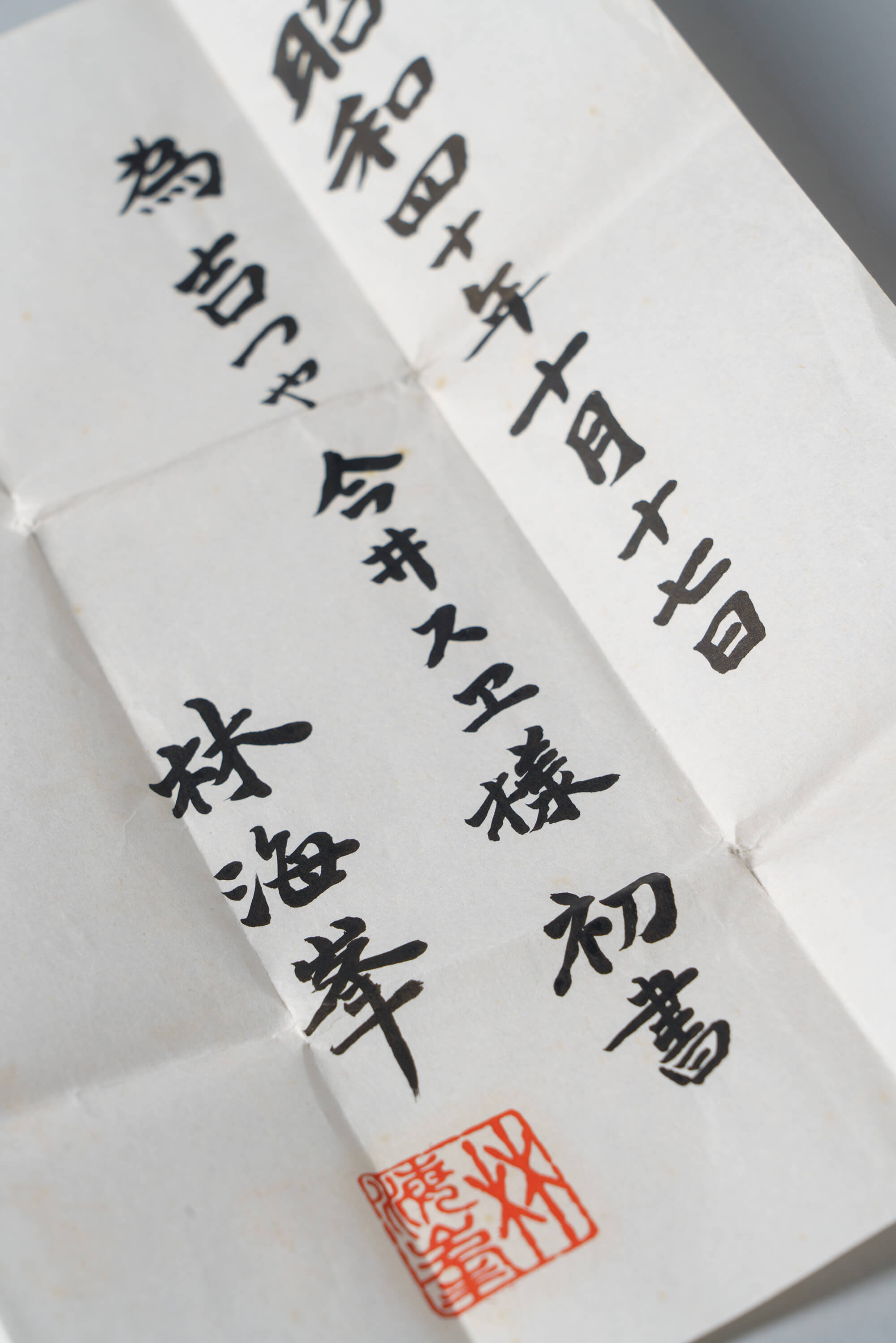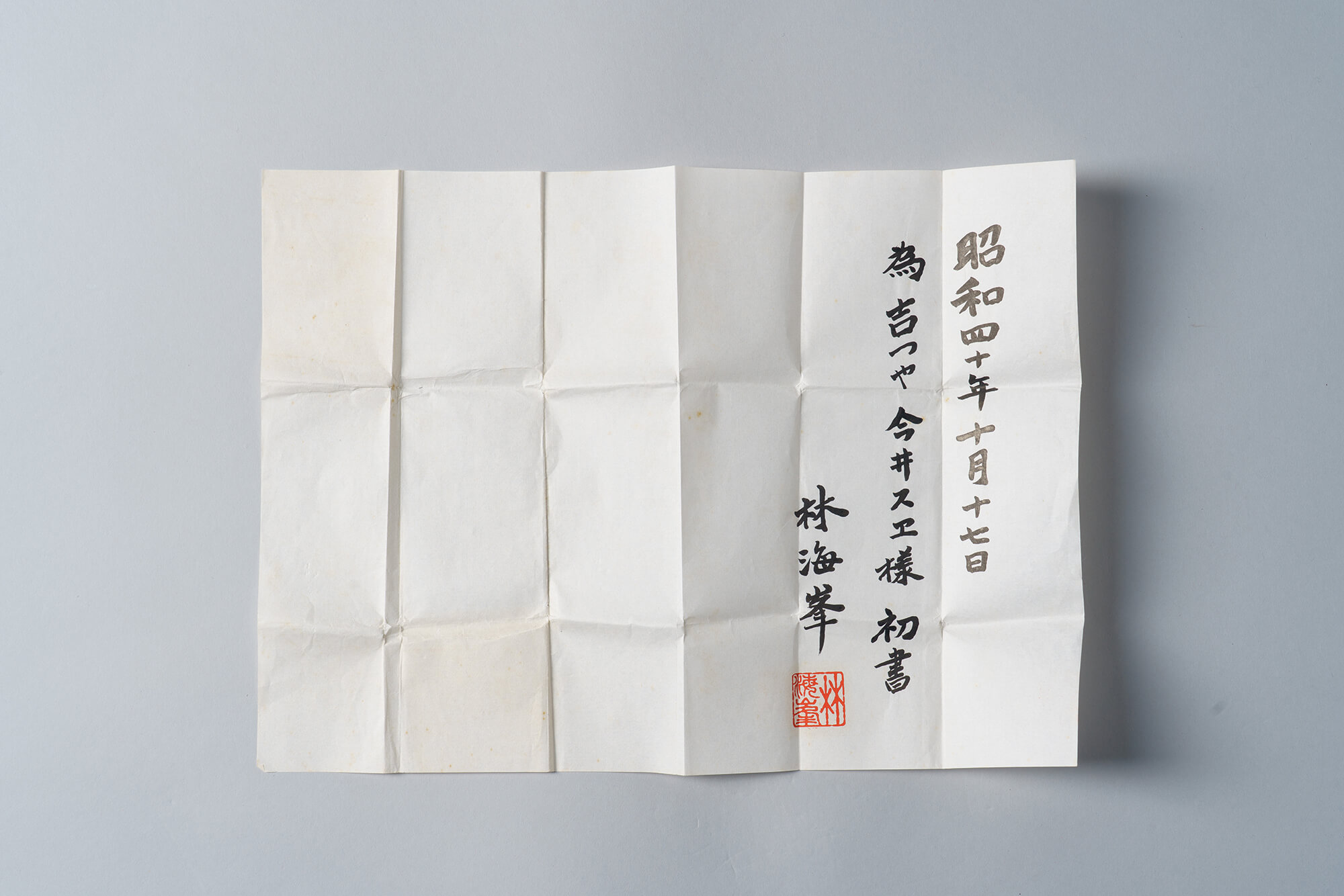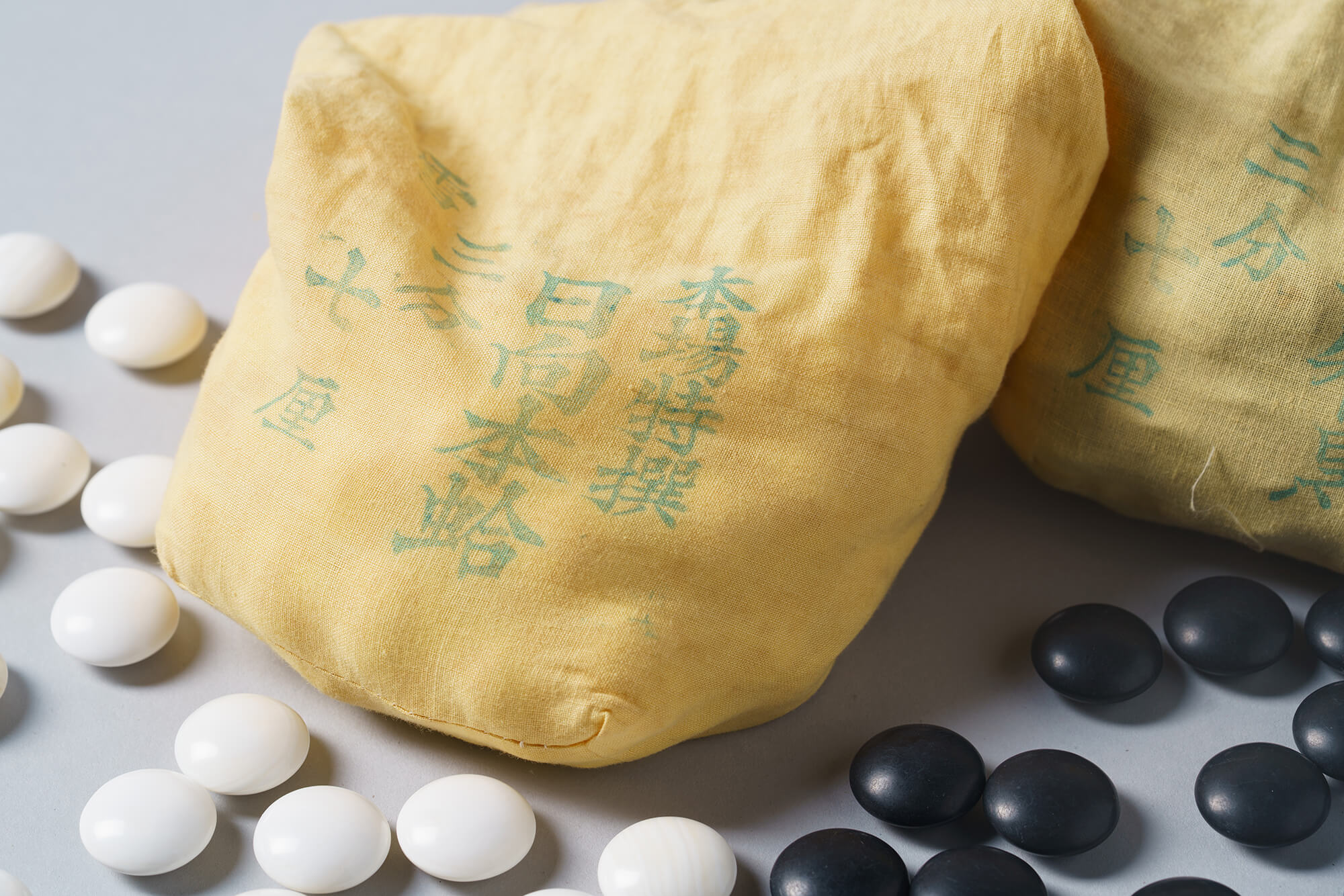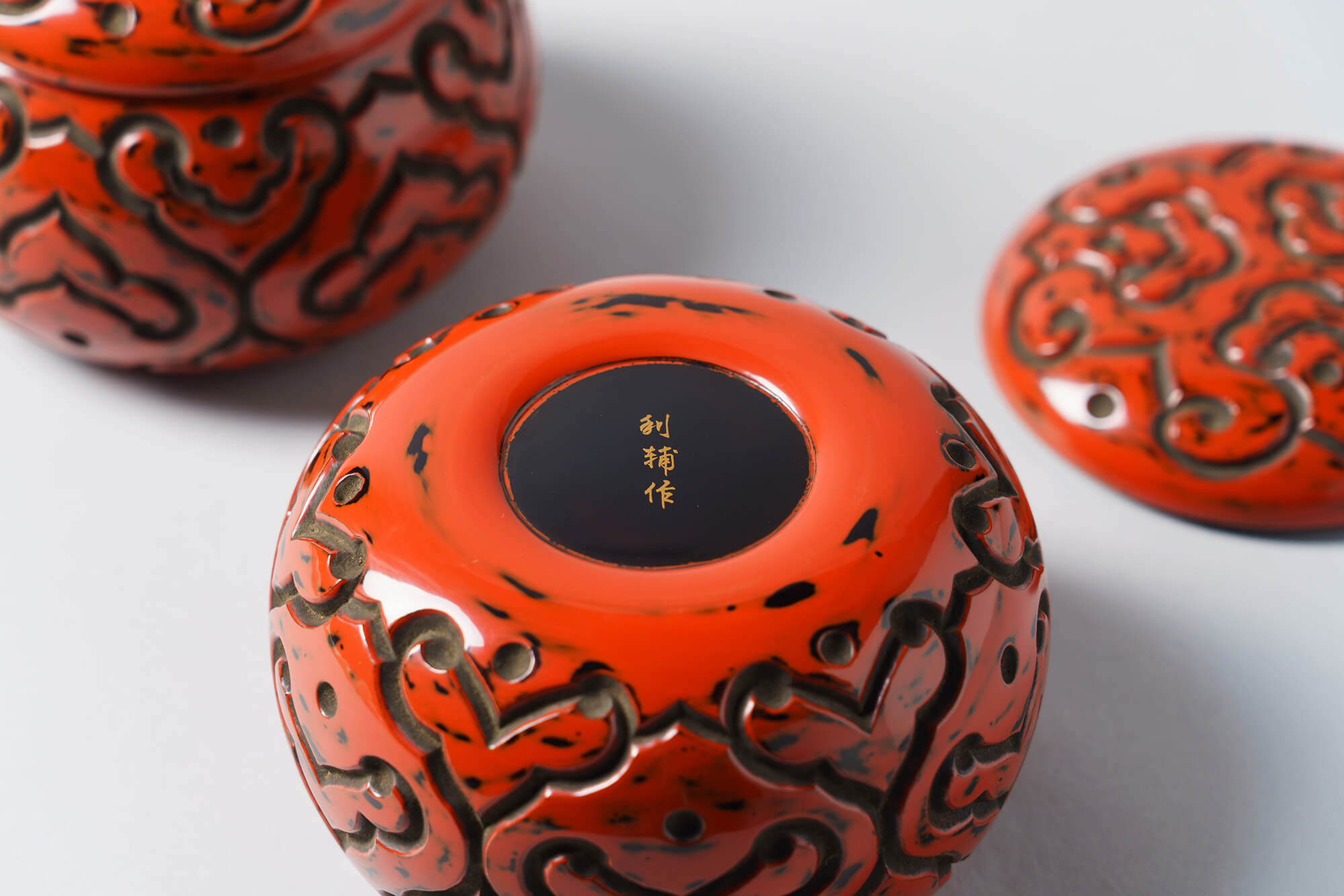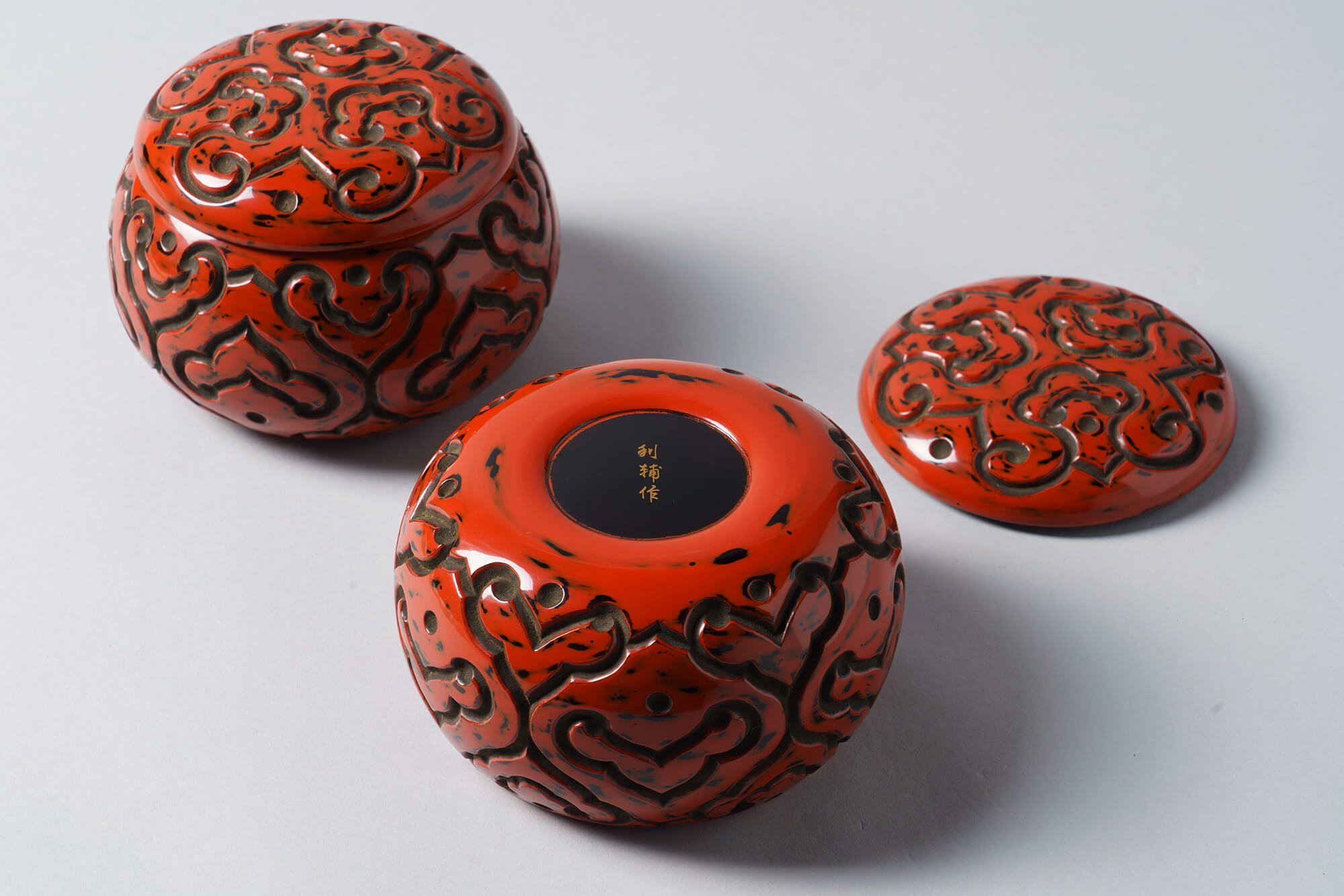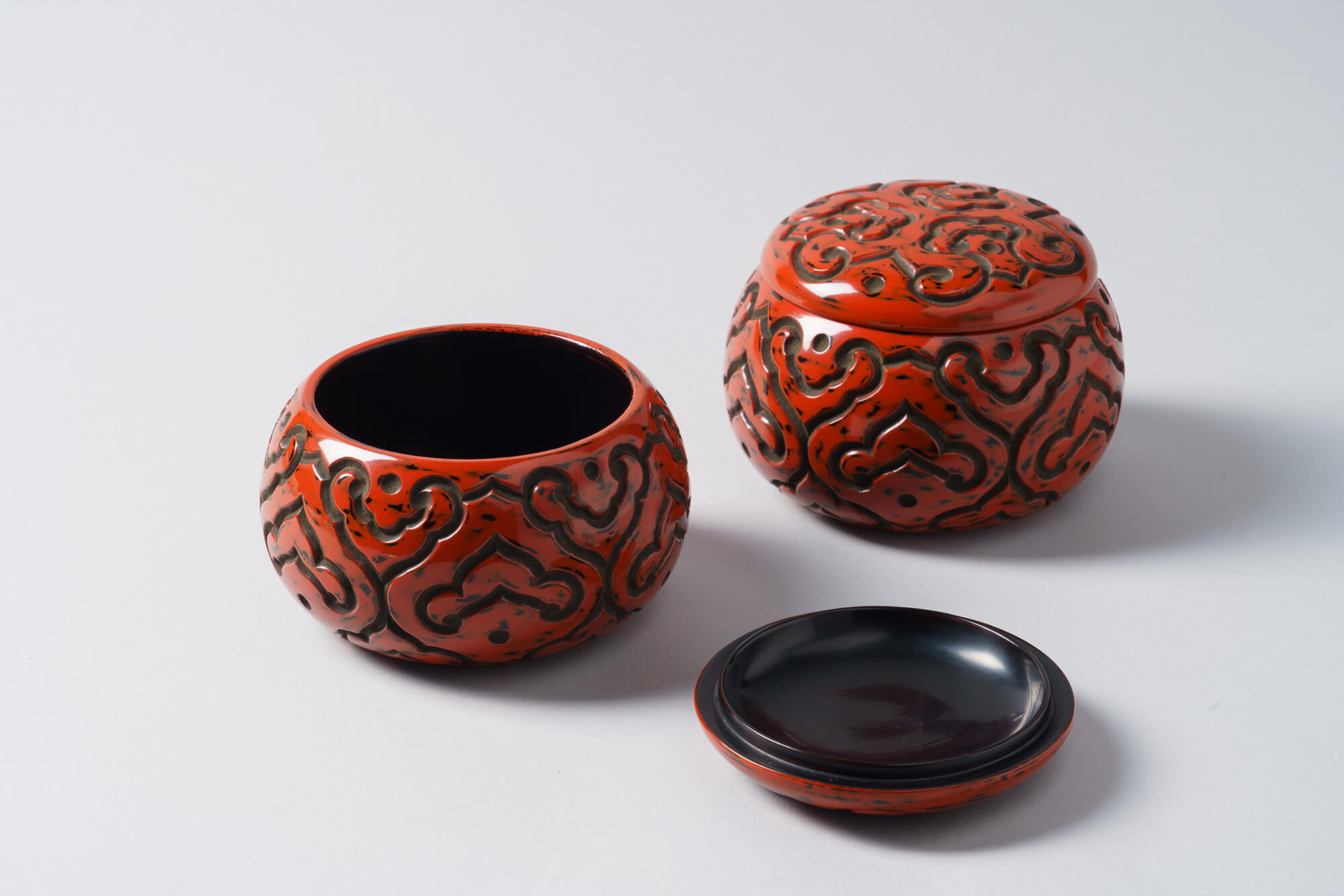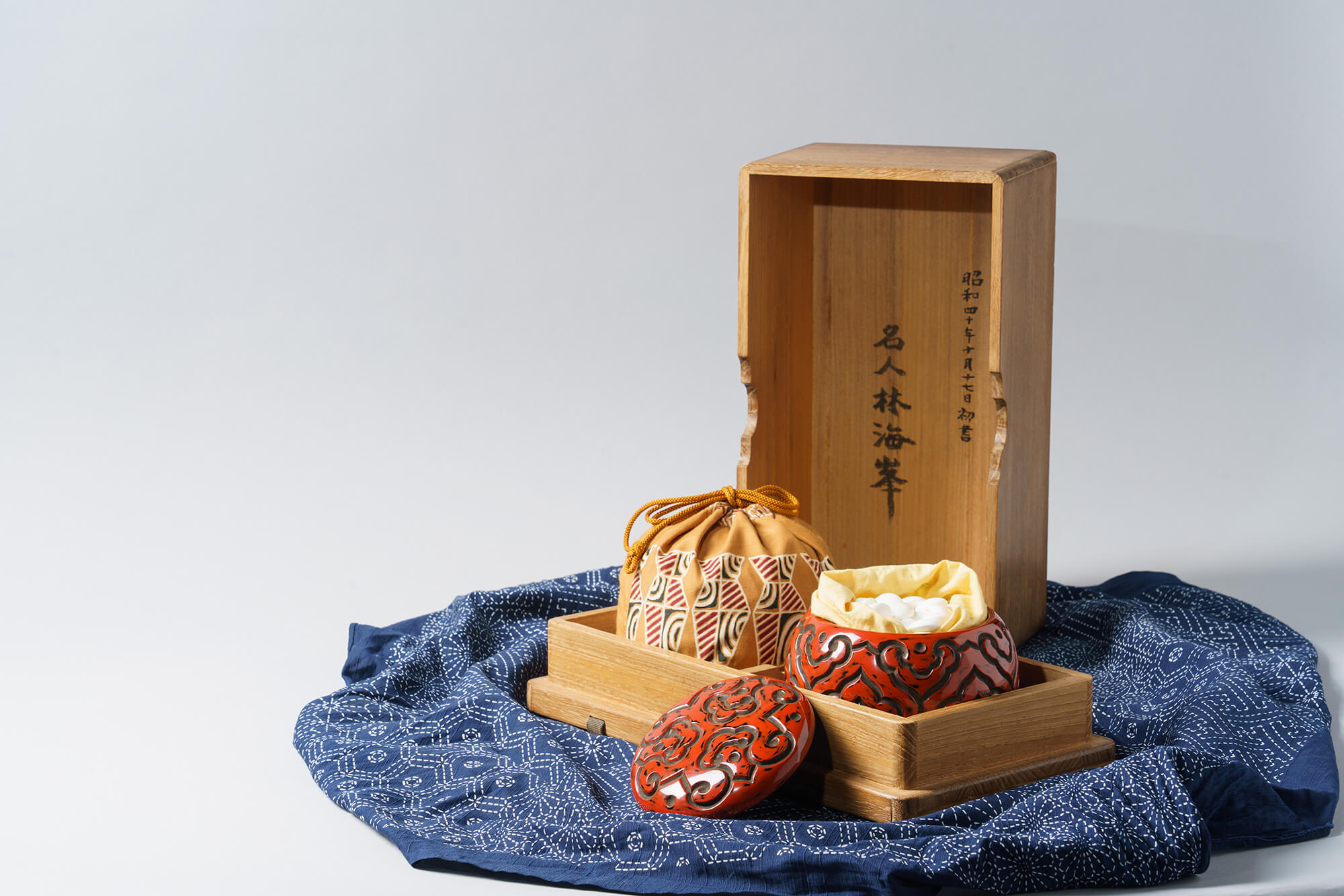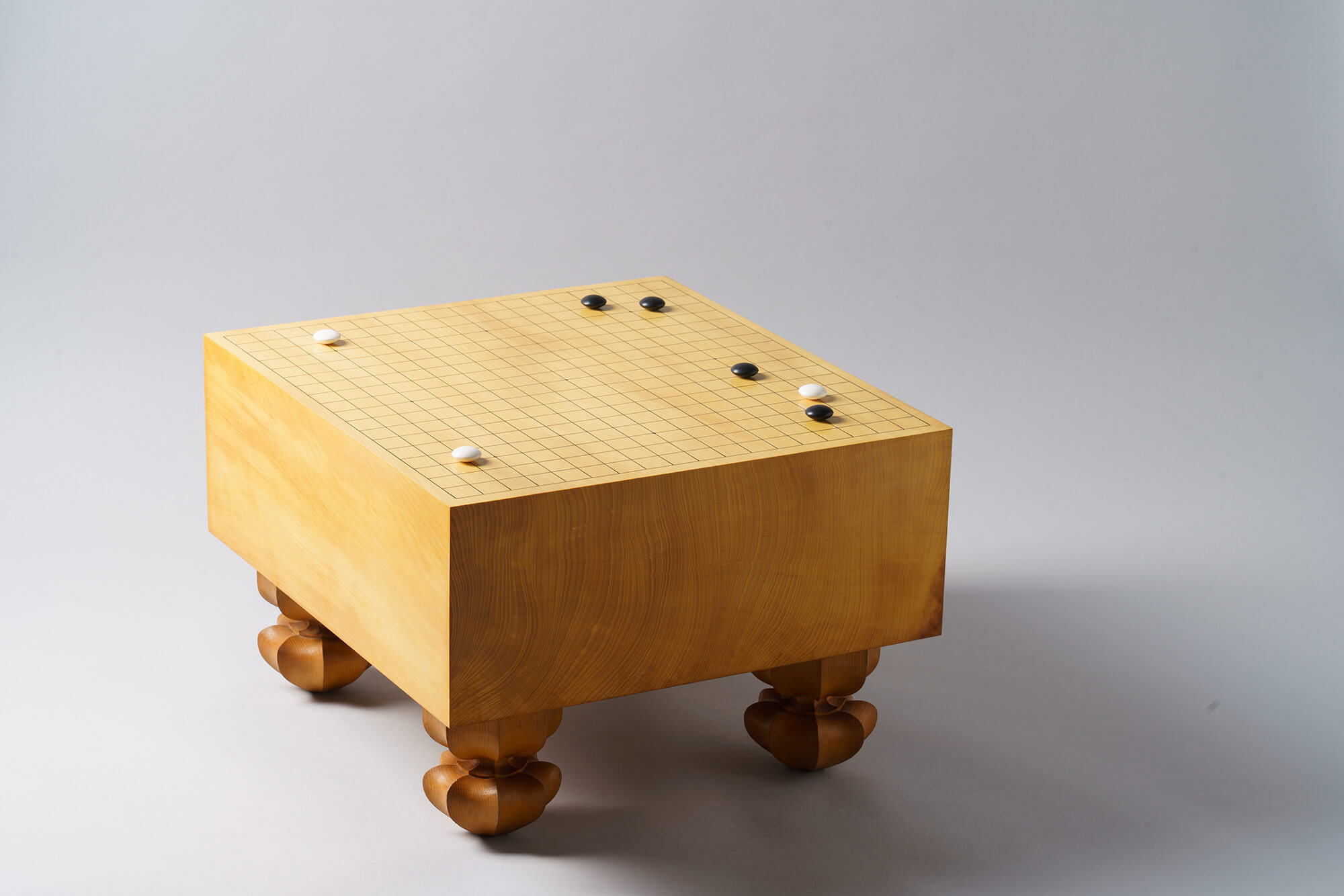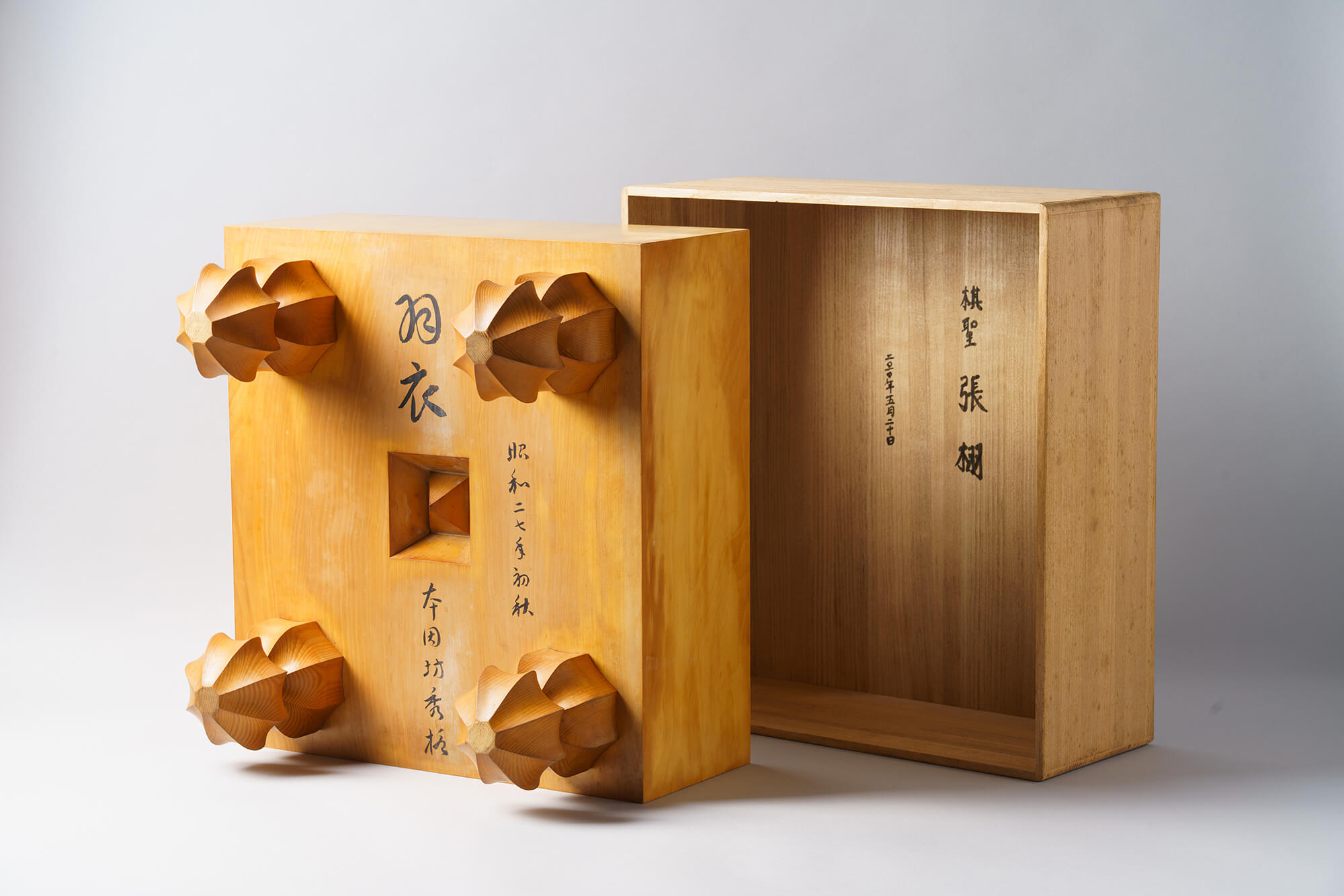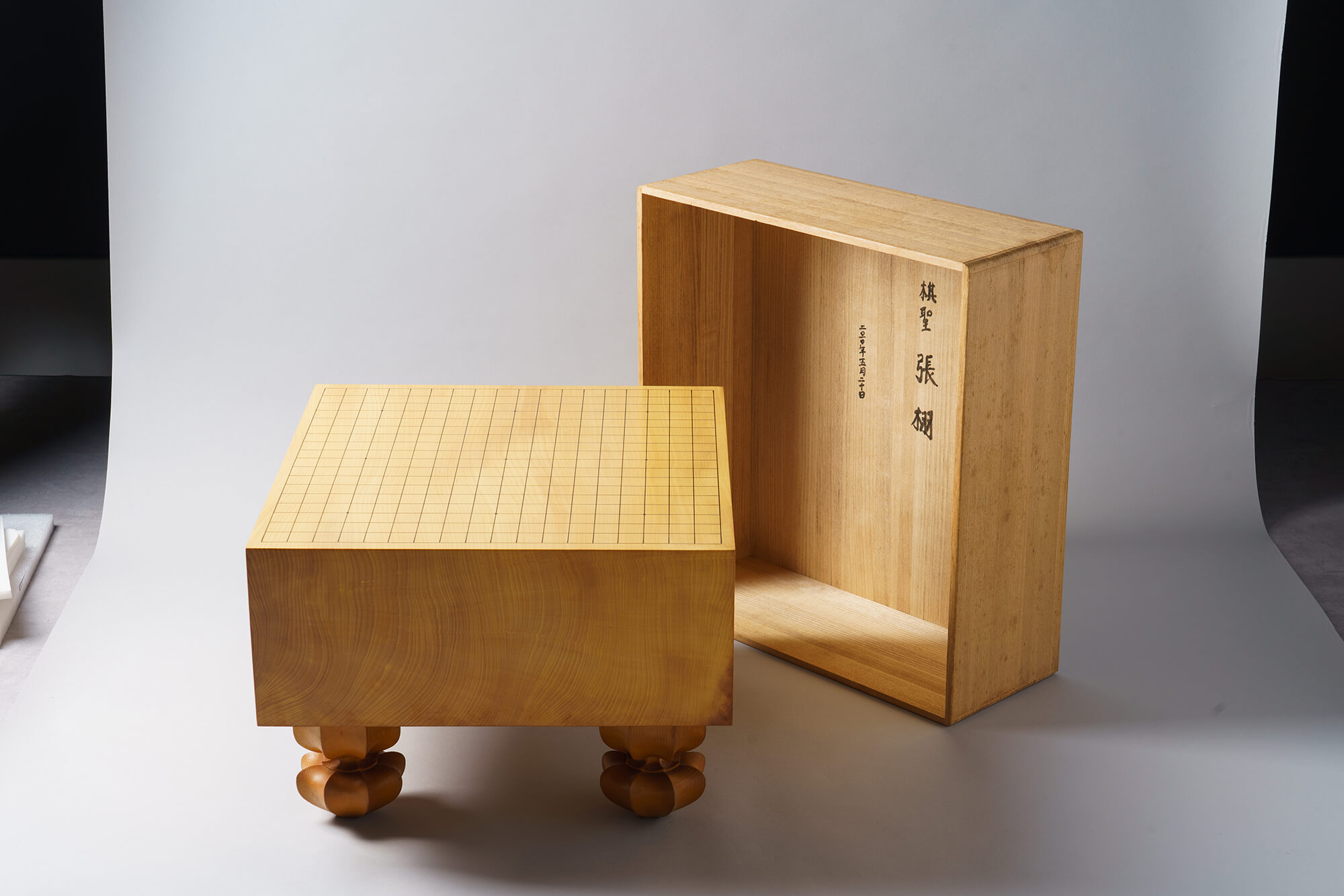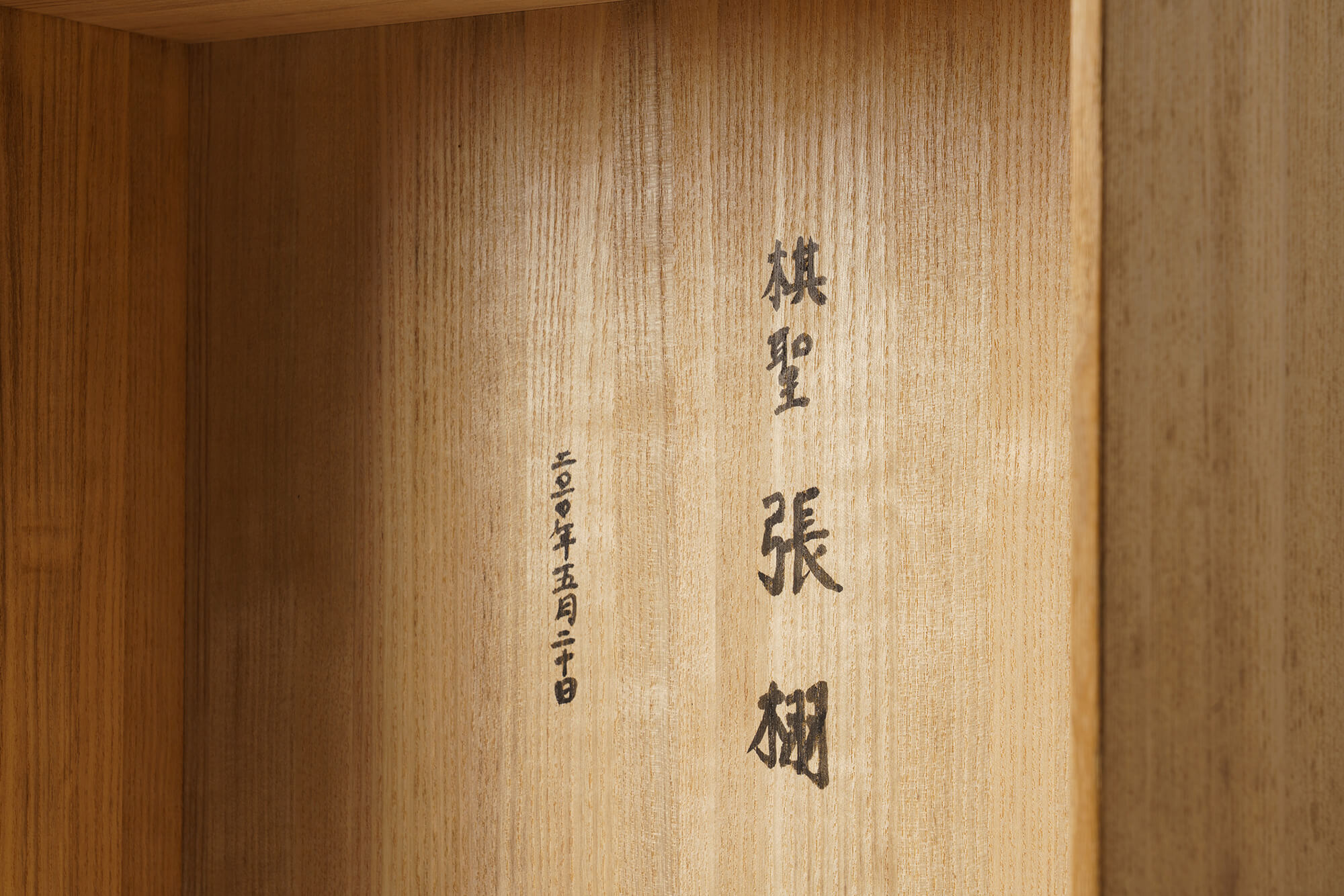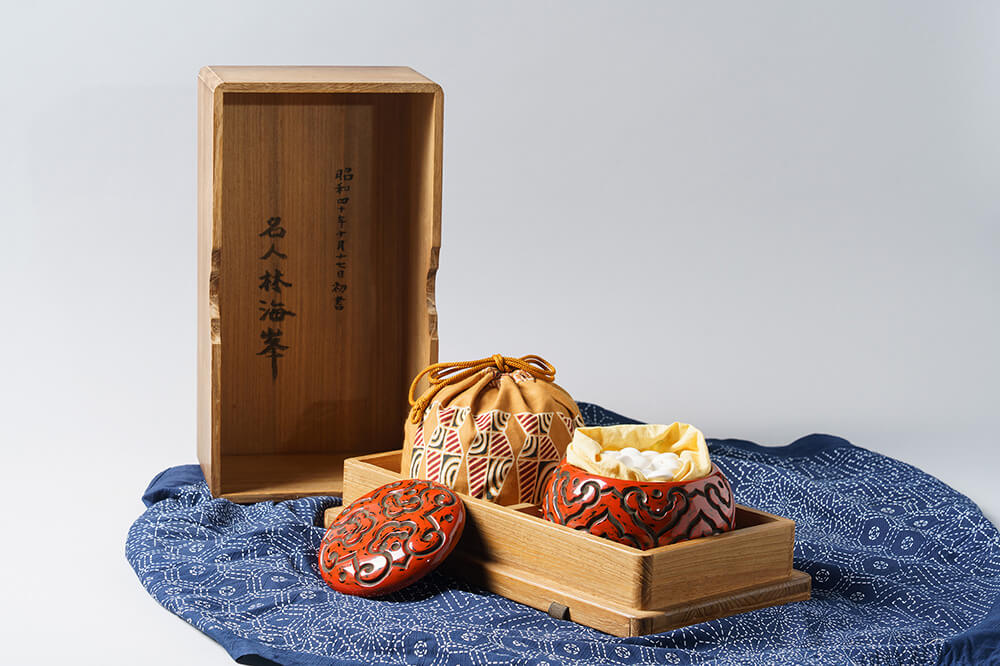

Taiwan in the World of Go
While China, Japan, and Korea dominate today's Go scene, Taiwan has also produced outstanding players and unforgettable matches. Lin Haifeng's (b.1942) rise in Japan, Chou Chun-hsun's (b.1980)LG Cup world title, and Hsu Hao-hung's (b.2001)Asian Games gold highlight Taiwan's growing legacy. International tournaments like the Zhonghuan Cup welcomed world champions such as Lee Chang-ho (b.1975) to compete in Taiwan. In this section, prized loans from Taiwan's top players and sponsors are displayed with reference to ancient artifacts in the main galleries. Together, they create a rich dialogue between past and present and testify to Taiwan's place in the world of Go.
- "Feathered Robe" Go Set
- Go Board: L.45.5, W. 42.5, H. 29.5
- Go Bowl: H. 11 (lid included), W. 12, MD. 12
- Go Pieces (each) H. 1, D. 2
- Collection of Pei-Sheng Cultural and Educational Foundation (Haifong Go Academy)
In the early 20th century, Japan dominated the international Go scene, attracting players from across East Asia who aspired to claim its seven major titles. This set witnessed the victories of three legendary players– "Honinbo" Takagawa Kaku (1915–1986), "Meijin" Lin Haifeng (also known as Rin Kaihō, b. 1942), and "Kisei" Chang Hsu (also known as Cho U, b. 1980)--who signed the set under their honorary titles. The latter two are renowned players from Taiwan who studied the art of Go in Japan.
The legged board is made of kaya wood in the Japanese style. The lacquered bowls contain premium black Go stones from Nachi and white stones made from Hyuga clam shells. In antiquity, Go stones came in various materials, including jade, wood, metal, shell, glass, and crystal. The last two varieties are shown elsewhere in this exhibition.




